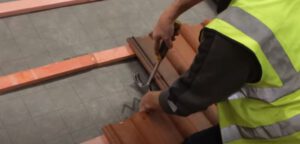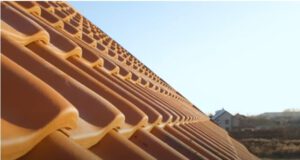 Australia’s unique climate can sometimes lead to condensation issues in homes, particularly within roof spaces. This moisture build-up can result in serious problems like mould growth, structural damage, and reduced insulation effectiveness. This article outlines the key steps to prevent roof condensation in your Australian home.
Australia’s unique climate can sometimes lead to condensation issues in homes, particularly within roof spaces. This moisture build-up can result in serious problems like mould growth, structural damage, and reduced insulation effectiveness. This article outlines the key steps to prevent roof condensation in your Australian home.
Understanding Roof Condensation
Before we delve into prevention methods, it’s crucial to understand what roof condensation is. When warm, moist air comes into contact with a colder surface – like your roof during a cool night – the air cools down and can’t hold as much moisture, leading to condensation. This process often occurs in roof spaces and attics where ventilation is limited.
Importance of Adequate Insulation
Insulation plays a vital role in regulating the temperature within your home, and thus, in preventing roof condensation. Good insulation reduces the temperature differential between the inside and outside of the roof. This lessens the likelihood of condensation as the inside surface of the roof remains warmer, making it harder for the moisture in the air to condense.
When insulating, pay close attention to the type of insulation and its correct installation. A professional insulation installer can provide valuable advice based on your home’s specific needs.
Ventilation is Key
Proper ventilation is essential in managing and reducing roof condensation. Ventilation allows moist air to escape, reducing the overall humidity within the roof space. This can be achieved by installing static, turbine, or powered vents.
However, it’s essential to make sure that the vents are correctly installed and not blocked. A professional roofer or builder can assess your home’s ventilation needs and recommend the best solutions.
Use of Vapor Barriers
Vapor barriers are another effective method to control roof condensation. They’re designed to restrict the passage of water vapor into the roof space. Typically, a vapor barrier is a layer of plastic or foil material that’s installed on the warm side of the insulation, usually just below it.
Importance of Regular Maintenance
Regular roof inspections and maintenance can help prevent condensation issues by catching and resolving small problems before they escalate. Look for signs of moisture or water damage, such as discolored or damp patches on the ceiling, musty smells, or visible mould growth.
Dealing with Internal Moisture Sources
 Managing internal sources of moisture can also contribute to reducing roof condensation. Activities like cooking, showering, and drying clothes indoors can significantly increase indoor humidity levels. Using exhaust fans in kitchens and bathrooms, and venting clothes dryers directly outside, can help manage this moisture.
Managing internal sources of moisture can also contribute to reducing roof condensation. Activities like cooking, showering, and drying clothes indoors can significantly increase indoor humidity levels. Using exhaust fans in kitchens and bathrooms, and venting clothes dryers directly outside, can help manage this moisture.
Professional Help
While there are many steps you can take yourself to prevent roof condensation, it’s sometimes best to seek professional help. A roofing specialist or building professional can assess your specific situation, identify potential issues, and suggest tailored solutions.
Conclusion
Preventing roof condensation in your Australian home is crucial for maintaining a healthy, comfortable, and safe living environment. By implementing the right insulation, ensuring proper ventilation, installing vapor barriers, and managing internal moisture sources, you can effectively control and prevent condensation issues. Regular roof maintenance and professional inspections are also key elements in keeping your home condensation-free.